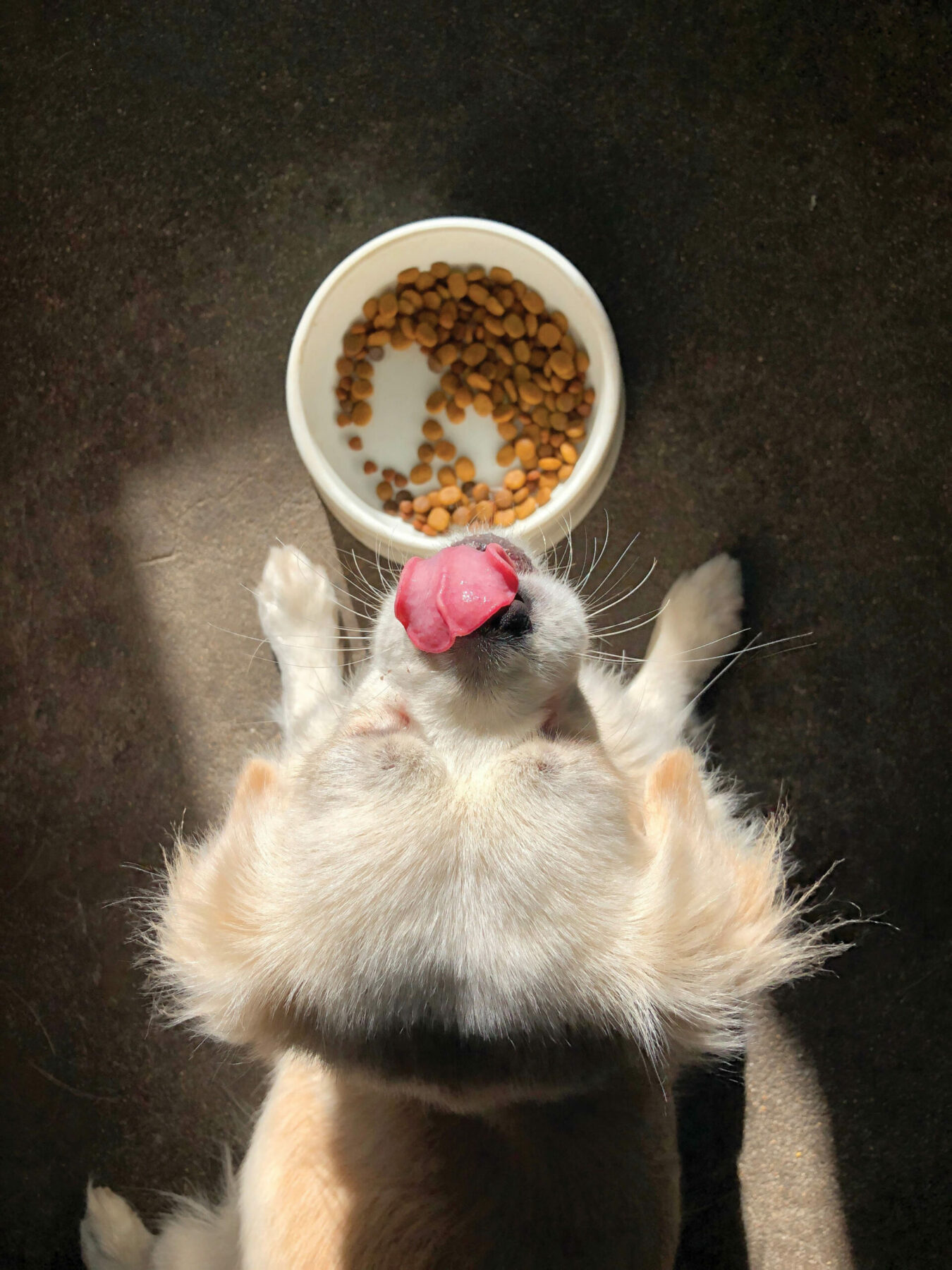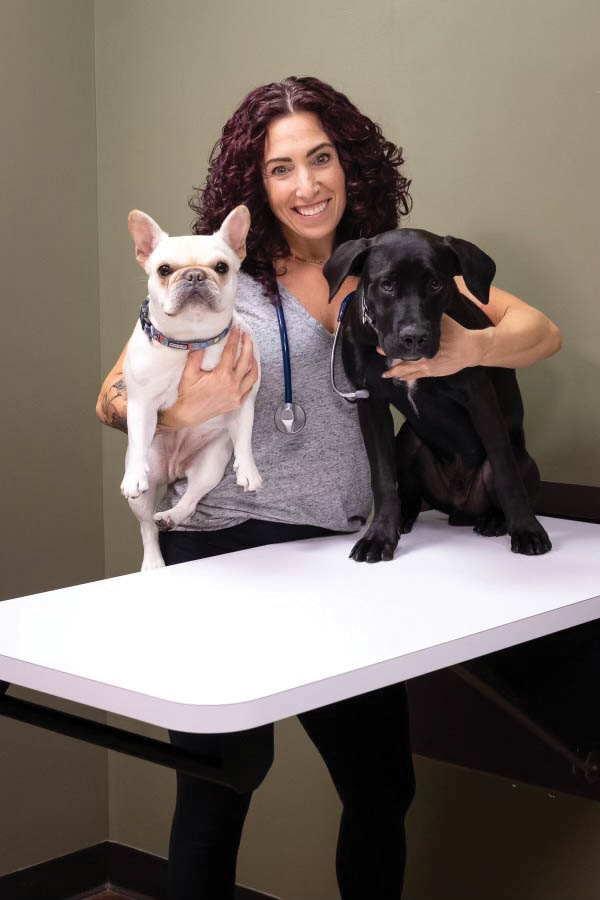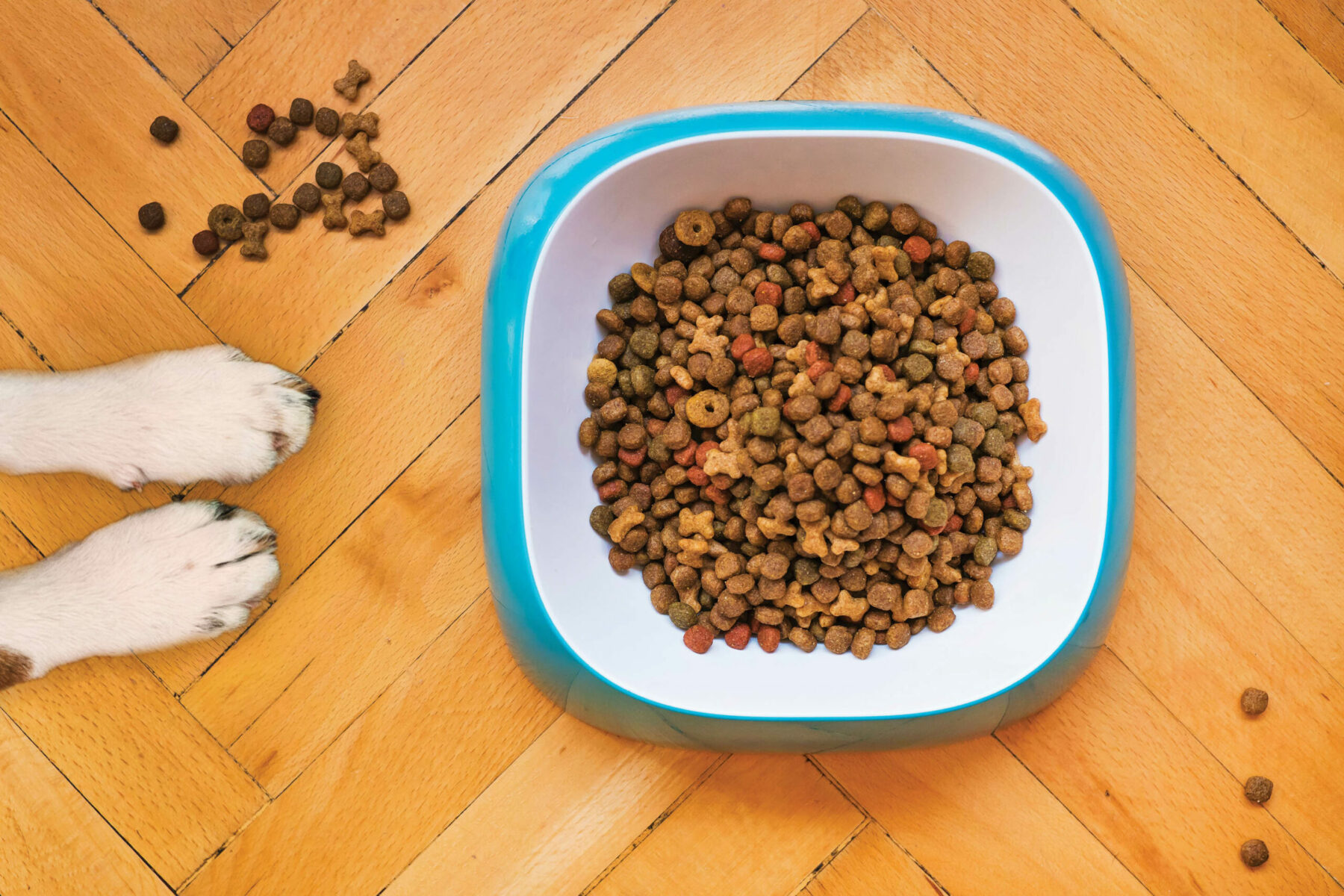A Local Vet’s Guide to Brand Food

Loving your dog well can look like many different things — cuddles, long walks and trips to the park. However, veterinarian Jessica Morrissey at Austin Urban Vet Center says one of the most important ways to love your dog well is by being smart about their nutrition.
Morrissey says pet owners often think overfeeding, providing specialty food and regularly offering table scraps are forms of affection. However, this only fuels the growing number of overweight and obese pets.
“Dog foods are not marketing for the health and well-being of your dogs,” Morrissey says. “They are marketed toward humans.”
Meaning, companies will do anything to convince you to spend your money. The attention-grabber could be anything from colorful packaging to using buzzwords such as “organic,” “grain-free” and “fresh” to even making the products look like “people food.”

Credit to Virginia Carr
Dodge the marketing tactics and stick to what will help your dog live a long and healthy life. When making decisions about your dog’s health, consult your vet first, not the internet.
“Just like human nutrition, dog nutrition is changing and evolving all of the time. We’re learning new things. Different breeds require different things,” Morrissey says. “When it comes to picking a brand of dog food, I feel very strongly that the big-name brands are the ones I’m most comfortable with.”
Boutique-style brands are popping up in many corners of the internet and on store shelves seemingly everywhere. These small businesses grab your attention but may not be able to fulfill your dog’s long-term nutritional needs.
The problem, Morrissey says, is the lack of regulation. Smaller companies typically lack the funds for proper testing, in-depth research and quality control.
Additionally, it’s important to ignore filler words on food labels. Morrissey says phrases such as “organic” and “human-grade” are gimmicky and do not make a difference in the quality or benefits of the food.
Many pet food trends follow fads and diet culture among humans. Just like many of these falsified human “quick-fix” or “next-best-thing” phenomenons, they also don’t work for pets.
A trend that vets are seeing is the rise in popularity of “grain-free” foods. Morrissey says many people assume their dogs have an allergy or food intolerance when, in actuality, it is rare. The “grain-free” trend is largely unhelpful, seems to follow the human diet culture and can even be harmful to your pet’s health.
Studies conducted by the FDA have found “grain-free” foods have been linked to heart disease in dogs. They are now trying to figure out if the cause is a lack of grains or the usage of filler products, such as peas.
When it comes to well-known dog foods, Morrissey often suggests brands such as Science Diet, Purina and Royal Canin to her clients.
For homemade dog food, Morrissey says there can be a place for it in a dog’s diet, but it is not easy to implement, especially in the long term.

“You cannot go to Google, find a recipe for dog food and think it’s OK because it’s not,” Morrissey says.
The problem lies in the fact that these cute and fun recipes do not consider your dog’s breed and nutritional needs for a long, healthy life.
For people interested in fresh food options, Morrissey suggests a brand called Just Food for Dogs that offers a freshly cooked approach to mealtimes. Another great resource, the Balance IT service takes your pet’s personalized information and provides appropriate recipes.
After you and your vet decide which food best suits your dog’s needs, the next step is to pinpoint the optimal serving size for mealtimes. A food scale is a great way to avoid overfeeding your dog. Morrissey says many companies suggest larger serving sizes than necessary on their labels so it’s best to consult with your vet about the exact amount that is right for your pets.
Similar to food, follow the same mindset when providing treats.
“When it comes to snacks, things like carrots, apples and peanut butter are OK options,” Morrissey says. “However, for dogs that need to lose weight, keep in mind that healthy snacks are still extra calories.”
If you want to give your dog a treat while on their weight loss journey, it may be appropriate to alter their serving sizes to avoid overfeeding.
In addition, it’s also important to take note of your activity level throughout the year. It is common for families to be less active through the colder months so make sure to ask your vet about when to increase or decrease serving sizes based on activity level.
Overall, being the best pet parent you can be is all about being well-informed and trusting the professionals to keep those tails wagging for years to come.






